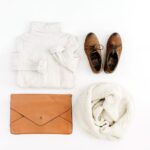Many of us will be spending more time outdoors as the weather gets warmer and more sunny. Many of us will think about getting the “summer glow” at Lone Star Family Health. What is the problem?
The sun’s ultraviolet (UVA) rays A & B penetrate UW Health Union Corners the skin and cause premature aging. UVB rays are harmful to the skin’s top layers and can cause skin burns. Lone Star Family Health tanning salons use lamps that emit the same amount of UV radiation as the sun. Skin cancer can develop from long-term exposure to both types radiation.
Extended Lone Star Family Health sunburn can be caused by prolonged exposure to UV light from the sun or tanning bed. Your skin’s melanin production is increased when you are exposed to ultraviolet light. This reduces the effects of UV light on your skin. Your skin’s natural pigment is melanin. Genetic factors determine how much melanin a person produces.
Sunburn symptoms usually appear after 2-6 hours and peak between 12-24 hours. Redness, warmth, swelling, pain and blistering are some of the symptoms. You may experience severe sunburn symptoms such as blistering on a large area of your body, fever and chills, severe pain, muscle weakness, headaches, nausea, vomiting, muscle weakness, muscle weakness, muscle weakness, muscle weakness, muscle weakness, migraines, nausea, nausea, nausea, and vomiting.
Protect your skin when you are outdoors to prevent sunburn. A hat with a broad brim (approximately 4 inches) is recommended. Long-sleeved shirts and pants, as well as long or long-length skirts or trousers, are best. Covered shoes are also recommended. Broad-spectrum, water resistant sunscreen Lone Star Family Health should be applied 15 minutes before going outside. After two hours in direct sunlight, after swimming or sweating, reapply sunscreen. Avoid spending too much time in direct sunlight, especially between 10 a.m. to 4 p.m., when UVB rays can be the most intense. Don’t forget to avoid indoor tanning.
These steps are recommended by the American Academy of Dermatology if you have sunburn.
- To relieve pain, apply a cool compress to the area or take a cooling shower.
- To soothe sunburned skin, use a moisturizer with Aloe Vera and Soy.
- Avoid using topical “-caine”, such as benzocaine, as they can irritate skin and cause allergic reactions.
- Aspirin and ibuprofen can be used to reduce swelling, redness, or discomfort. If you have any concerns about these medications, talk to your doctor immediately.
- To replace the fluid lost from sunburn, drink more water
- You should not open a skin blister. Allow the skin to heal naturally and protect it from infection.
- Sunburned skin should be treated extra carefully while it heals.






